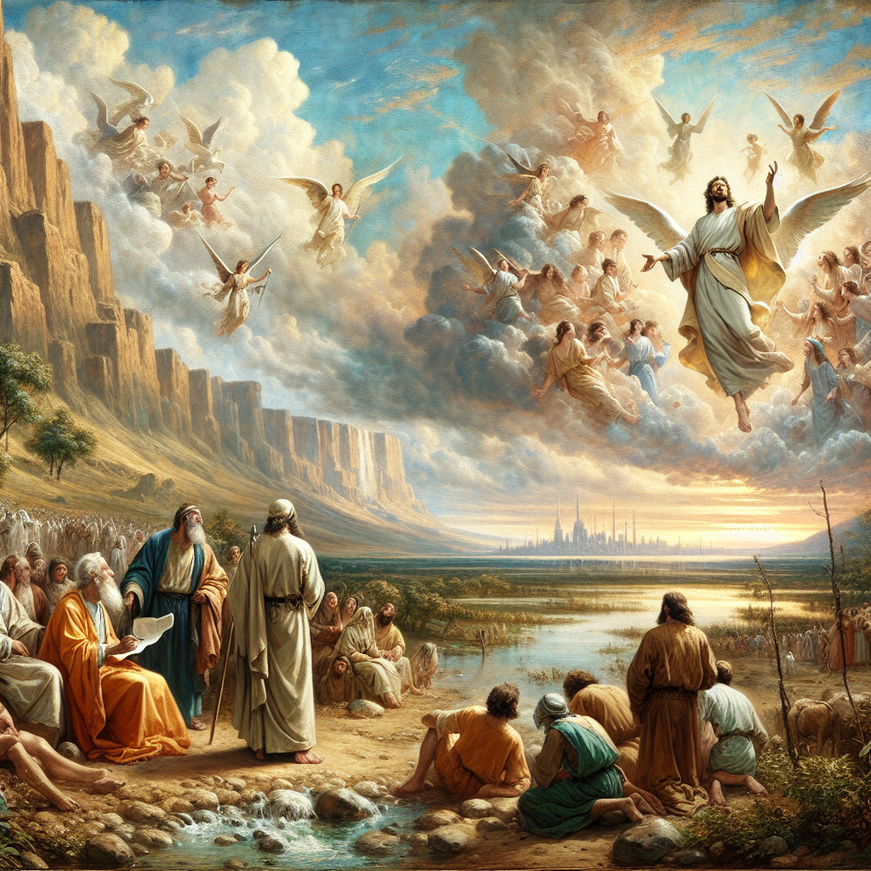Isaiah 11-13 Analysis: Unveiling the Messiah's Reign and God's Plan for Humanity

Isaiah 11-13 Analysis
Key Verses
- Isaiah 11:1-2: This passage introduces the Messiah as a shoot from the stump of Jesse, symbolizing the revival of the Davidic line, filled with the Spirit of the Lord, wisdom, and understanding.
- Isaiah 11:6-9: These verses depict a future of peace and harmony where natural predators live peacefully with their prey, symbolizing the transformative reign of the Messiah.
- Isaiah 12:1-3: A song of praise and thanksgiving for God's salvation and comfort, reflecting the joy of redemption.
- Isaiah 13:1-5: An oracle against Babylon, highlighting God's judgment and the summoning of His warriors to execute His wrath.
Themes
- The Messiah and Restoration: Isaiah 11 prophesies the coming of a Messiah from the line of David, who will restore peace and justice, bringing a new era of harmony and righteousness.
- Peace and Harmony: The imagery of predators living with prey in peace symbolizes the profound transformation under the Messiah’s reign, suggesting a return to Eden-like conditions.
- Salvation and Comfort: Isaiah 12 expresses gratitude for God’s salvation, emphasizing trust and the turning away of divine anger.
- Judgment and Wrath: Isaiah 13 focuses on God's impending judgment against Babylon, illustrating the balance between divine justice and mercy.
Historical Context
- Time Period: Isaiah's prophecies were written between 740-680 BCE, during the reigns of Uzziah, Jotham, Ahaz, and Hezekiah.
- Political Climate: Judah faced threats from surrounding nations, particularly Assyria, and Isaiah's prophecies often addressed these geopolitical tensions.
- Significant Events: The Assyrian threat loomed large, and Isaiah's messages often provided both warnings and hope for deliverance.
Cultural Context
- Jewish Customs: The expectation of a Messiah from the Davidic line was deeply rooted in Jewish tradition, reflecting hopes for national restoration.
- Social Structures: Isaiah's prophecies often addressed the societal hierarchies and injustices of his time, offering visions of a more equitable future under divine leadership.
Etymology
- "Stump" (גֶּזַע - geza'): Refers to the remnant of the Davidic dynasty, indicating a seemingly dead lineage that will bring forth new life.
- "Branch" (נֵצֶר - netzer): Symbolizes the Messiah, a new growth from the line of Jesse, indicating hope and renewal.
- "Fear of the Lord" (יִרְאַת יְהוָה - yirat YHWH): Denotes deep reverence and awe, a key characteristic of the Messiah's reign.
Put it into Practice
- Faith in Daily Life: Embrace the promise of restoration and peace, trusting in God's plan even amidst adversity.
- Sharing the Gospel: Communicate the message of salvation and comfort, emphasizing God's mercy and justice.
- Love and Compassion: Foster harmony and unity in personal relationships, reflecting the peace envisioned in Isaiah 11.
Questions
- How does the promise of the Messiah's reign influence your understanding of God's plan for humanity?
- What does living in harmony with others, as described in Isaiah 11, mean to you personally?
- How can you apply the themes of salvation and comfort from Isaiah 12 to your current life challenges and decisions?
Reflecting on these questions can lead to personal growth and a deeper understanding of the biblical text, encouraging a more profound spiritual journey.